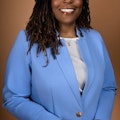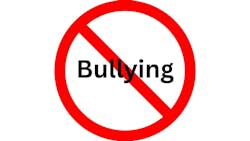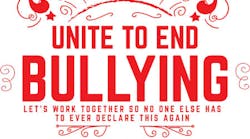Disclaimer: This article is not written from a place of victimhood and is not a request for sympathy. Rather, it’s written with mental fortitude and courage. Many speakers don’t share what’s happened to them simply because they fear retaliation or the loss of opportunities. I certainly considered this before writing my article. However, I’ve built my business to operate independently of dentistry. I’m no longer tied to the outcomes that dentistry can provide for me, and this has granted me a measure of freedom. It’s given me the outlet to be transparent about the challenges I’ve faced and to advocate for others who may not be able to share their stories.
Mental fortitude is essential for thought leaders and speakers. This journey opens them up to criticism, scrutiny, and even threats. Despite this, someone’s purpose and desire to have an impact often outweigh any judgment they face. But subjecting thought leaders to hostile behavior simply because they’ve chosen to share their expertise is never acceptable. We must ensure our learning environments remain just that—learning environments—that encourage healthy debate and uphold the highest professional standards.
On March 22, I delivered a two-hour virtual presentation for RDH Under One Roof Extended. It wasn’t my first time speaking for RDH Under One Roof, but it was my first virtual experience with them. While I’m grateful for the opportunity, I have to be honest about what happened: I faced the same hostile and unprofessional behavior from attendees that I’ve faced time and again during my 10 years as a professional speaker.
I speak about difficult and important topics—burnout, leadership and communication, HIV, and opiate addiction. These topics aren’t easy to address but they’re necessary. I put in hours of work to show up, share my voice, and contribute to these critical conversations. Yet, when I speak on these subjects, I often face disruption, disrespect, hostility, or bullying.
Out of all the industries I’ve spoken for, disruptive and hostile attendees have only occurred in dentistry. When I started 10 years ago, I was one of the only Black female speakers on the speaker circuit, and that often brought additional challenges that others in the industry weren’t facing.
What makes dentistry unique is that its audience has historically been quite homogeneous. The field is predominantly made up of white professionals, 37.7% of dentists are women,1 and more than 90% of dental hygienists are female.2
There is still a significant racial imbalance in dentistry, with only around 3.8% of dental professionals identifying as Black.3 This lack of representation often creates an environment where voices like mine, as a Black female speaker, are rare. This lack of representation has led to a culture where uncomfortable topics can trigger hostile reactions, especially when perspectives challenge longstanding norms.
These statistics are the primary reason I made the tough decision in 2019 to branch out from dentistry and move into more favorable industries, where it was easier to navigate and grow my business.
The fact is what I experienced this weekend at the RDH UOR Extended conference isn’t new. I’ve had attendees escorted out of my room at dental conferences, specifically because they became disruptive. I’ve had people attack me personally and question my credibility with inappropriate and demeaning comments. I’ve had people walk into my room, directly challenge me out loud based on my identity, and act unprofessionally during my presentations. At one point during an event, I had to ask for help when an attendee disturbed the flow of my session to the point that other participants became uncomfortable.
The latest event: UOR Extended
During my session at RDH UOR Extended, one attendee, Bonnie, decided to voice her dissatisfaction in a public chat. While I always appreciate constructive criticism, there’s a clear difference between respectful feedback and blatant disrespect. Bonnie’s comments were not aimed at helping me improve. They were personal, unprofessional, and demeaning. She didn’t simply say she disagreed with the course, she directly attacked my speaking ability, labeled me as having “poor speaking skills,” and accusing me of not taking criticism well.
This wasn’t feedback, it was an attack. It was meant to diminish my worth and undermine my efforts. I’m not perfect, and no speaker is. While respect is earned, professionals have a responsibility to engage with each other with courtesy and professionalism, especially when someone invests hours in preparing content to inform others.
Unfortunately, I’m not alone in this experience. Many women speakers, especially women of color, face similar treatment. I’ve witnessed the hostility and disrespect women in this field endure, often from people who hide behind a screen and attack from a place of hate and insecurity.
I want to share a significant point here: before my talk, two other speakers presented. Not once did anyone in the audience rip them apart. Their feedback was respectful. But when I started, that same level of respect was not extended. Why? Because my topic was uncomfortable for some, perhaps because it challenges deeply ingrained beliefs. Perhaps they didn’t like the package that delivered the message. But discomfort should never give anyone the right to be disrespectful.
Constructive vs. hostile feedback
There is a significant difference between constructive feedback (constructive criticism) and hostile feedback. Constructive feedback is delivered with the intent to help someone improve, not to belittle them. It’s specific, actionable, and focused on the behavior or issue, not the person.4 When done right, constructive criticism can be a valuable tool for growth to help speakers, professionals, and colleagues elevate their skills and performance.
Let’s be clear: disagreement is fine. But let’s disagree professionally. When you criticize, ask yourself: Are my words helping this person improve, or are they making them feel less than?
Here’s how to effectively deliver constructive criticism:
- Be specific. Focus on one issue at a time and provide examples of what could be improved. This makes the feedback actionable.
- Be respectful. Frame your feedback in a way that acknowledges the effort the person put in while offering a way to improve.
- Offer solutions. Instead of just pointing out what went wrong, suggest ways to address it.
Constructive criticism example 1: “I noticed that during your presentation, you spoke quickly in some sections, which made it hard for the audience to follow. Maybe try slowing down in key moments to emphasize important points.”
Constructive criticism example 2: “Your presentation was engaging, but there were a few slides that were hard to read due to the font size. Consider adjusting the font size to ensure everyone in the room can read the text clearly.”
In contrast, hostile feedback is personal, vague, and demotivating. It attacks the individual rather than offering actionable steps for improvement. This type of feedback has no place in professional environments and only serves to undermine the individual’s confidence and hinder growth.
What can we do about this?
I chose not to ignore the disrespect and to respond. In a respectful manner, I explained how important it is for us to disagree professionally. I encouraged the participant to find one pearl she could use and disregard the rest because with any presentation, not all information will be relevant. But by the third or fourth exchange, I knew I had to escalate the matter.
Hecklers will hijack the safety of your room if you allow it, which moves away from the purpose of sharing your message. I reached out to the event admins and let them know that Bonnie was trolling in the comments and disrupting the flow of my session. The focus of the room was shifting from my content to her negative energy, and I couldn’t allow that to continue.
If you’re a speaker dealing with similar disruptions, here’s what you can do:
- Set boundaries early: From the outset of your session, make it clear that respectful discourse is required. Encourage feedback but let your audience know that personal attacks will not be tolerated. I start with these housekeeping boundaries for every session.
- Respond respectfully: If you face negative comments, respond professionally but firmly. In this instance, I thanked Bonnie for her feedback. I encouraged her to find one pearl she could apply and leave the rest. My attempt to de-escalate went unnoticed by Bonnie, as she was more focused on disrupting the presentation than engaging in a healthy discussion.
- Don’t hesitate to escalate: If someone continues to disrupt the flow of your session, don’t be afraid to involve the event admins. Let the team know what’s happening and ask for support in managing the situation. After several comments toward me and other attendees, I alerted the admins of RDH.
- Empower your audience: I was fortunate enough that other attendees in the session spoke up against the negativity. When you create a safe and respectful space, others will follow your lead. I am appreciative of their support.
- Know when to walk away or dismiss an attendee: As a speaker, your mental health is paramount. If the environment becomes too hostile and no one is stepping up to address it, know that it’s OK to ask the guest to leave. You have a right to gain control of your room, protect the energy of the attendees, and continue a peaceful program.
Collaborate with event organizers to create professional learning environments
Speakers and event organizers must work together to ensure that the learning environment is respectful, productive, and free from disruptions such as heckling. One of the most important steps in preventing hostile behavior is addressing it upfront. Event organizers can set the tone by clearly communicating the expectations for attendee behavior and ensuring that any disruptive actions will be immediately dealt with.
Sample statement for event organizers: “Welcome, and thank you for attending today’s session. We are committed to providing a positive and respectful learning environment. Please note that any disruptive behavior, including heckling or personal attacks, will not be tolerated. Our speakers are here to provide valuable insights and knowledge, and we ask that you engage with them constructively. If any disruptive behavior is observed, we will ask that the person be escorted out of the session. These measures are in place to ensure that everyone can enjoy the full benefit of the presentation. If you have any questions or concerns, please feel free to reach out to one of our event staff members.”
Before using this statement, organizers should make sure that it’s been reviewed by their legal and HR representatives to be sure it aligns with company policies and protects all parties involved.
Additional steps for event organizers to handle heckling
- Set clear expectations in pre-event communications. Include a statement in event materials, emails, and the session description that highlights the importance of respectful interaction and outlines the consequences of disruptive behavior.
- Offer pre-event training for attendees. Organizers can offer a brief training or reminder for attendees on the importance of maintaining professionalism during an event.
- Highlight accountability in the event terms and conditions. When attendees register, include a clear code of conduct in the terms and conditions they agree to. This should outline acceptable behavior, including rules regarding personal attacks and disruptions.
By taking these steps, organizers can significantly reduce the likelihood of disruptive behavior and ensure that speakers and participants feel safe and supported. The acceptance of bullying, misogyny, and racism in professional environments, especially in industries like dentistry, can no longer be tolerated. For a healthier, more inclusive professional landscape, we must hold ourselves and others accountable. It’s time to confront this behavior head-on and demand better.
To my fellow speakers, let’s continue to show up and know that our voices matter and are worth hearing. To event organizers, it’s time to create environments where respect and professionalism are the standard, not the exception. To attendees, if you disagree, do so respectfully by contributing to the conversation, not disrupting it.
Together, we can create spaces where everyone, regardless of background, feels safe, respected, and empowered to share their expertise without fear of hostility. The time for change is now, and it starts with all of us.
References
1. US dentist demographics dashboard. American Dental Association. https://www.ada.org/resources/research/health-policy-institute/us-dentist-demographics
2. Dental hygienist demographics and statistics in the US. Zippia. https://www.zippia.com/dental-hygienist-jobs/demographics/
3. Wright JT, Vujicic M, Frazier-Bowers S. Elevating dentistry through diversity. J Amer Dent Assn. 2021;152(4):253-255. https://jada.ada.org/article/S0002-8177(21)00095-7/fulltext
4. Ramani S, Könings KD, Ginsburg S, van der Vleuten CP. (2019). Feedback redefined: Principles and practice. J Gen Intern Med. 2019;34(5):744-749. doi:10.1007/s11606-019-04874-2
About the Author

Jasmin Haley, MS, RDH
Jasmin Haley, MS, RDH, is the Principal Consultant of Legacy Scaler, a leadership development and curriculum design firm. With over 24 years of experience, Jasmin has excelled in clinical practice, academia, and as an entrepreneur. She is the founder of Beyond the Prophy and hosts a popular podcast dedicated to empowering dental professionals. Through her work, Jasmin helps professionals reach their full potential and make a lasting impact in their communities. Visit beyondtheprophy.com to learn more.


